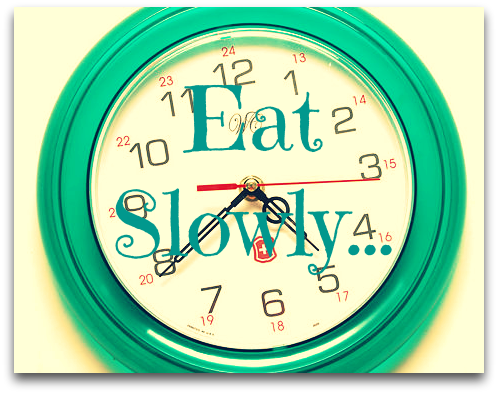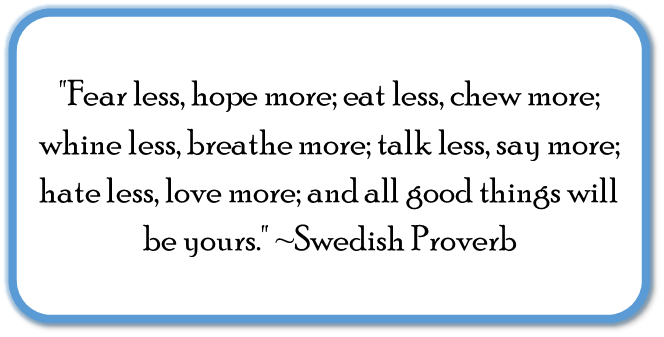Mindful Eating-The How and How Much?
Do you set a stop watch when you sit down to eat? That’s the way I feel when I eat with my husband, Michael. It’s ready, set, go . . . cram in as much food as fast as you can before the second hand gets around the clock. He eats so fast! That was before last summer. A year ago, Michael wanted to drop some weight so he made some important decisions:
1) He started listening to his signals of hunger and fullness. Go to my blog post here to learn more about that! If he was not hungry then he made it a matter of principle to NOT EAT! Wow! That takes a lot of discipline right there because we all know that we eat for so many reasons that are not related to hunger. See my blog post here to learn more about that!
2) He stopped eating empty “C” foods which for him included: Cakes, Cookies, Crackers, Chips, Cereal. Basically all the empty processed carbohydrate foods which he was easily grabbing from the pantry and eating completely mindlessly, practically went away. That leads to #3.
3) He slowed down his eating! He started putting his fork down between bites. He initiated conversation at the dinner table so that he had to talk more rather than eat. He chewed his food more. He stopped loading his fork with the next bite before he was done chewing and swallowing the first bite. And he started to taste the food more as a result.
It’s Been Studied
A recent study from the Journal of the Academy of Nutrition and Dietetics showed that when participants ate slower, they consumed fewer calories. Furthermore, the American Journal of Clinical Nutrition study demonstrated that gut hormones which regulate hunger and fullness are produced in higher levels when you chew slower. Other studies have shown that those who chew slower actually have reduced incidence of diabetes (1) and eating slower at meals reduces your need for snacking later (2).
I found this very insightful saying. It would be a good thing to put on a plaque in my dining room!
Mindful eating means paying attention to more than just the taste of the food. Use all your senses to smell the aromas; hear the crackle or crunch; see the beautiful colors and arrangement of the food on the plate; feel the textures in your mouth i.e., is it smooth, silky, rough, dry, wet? Notice little things like where do I do most of my chewing? on the left? on the right? Move food around in your mouth so that all flavors can be experienced by different taste buds on the tongue.
Mindful eating means taking time to eat by chewing food carefully, slowly, maybe even chewing over 50 times to get the food to its liquid form before swallowing.
Mindful eating means stopping when you’re full which on average is about 15-20 minutes of slow, sustained eating so that hormones can trigger fullness. The stomach is about the size of your fist. Are you eating too much? Start by filling a small plate and eat slowly. If you are still full, then go back for more, but more than likely you won’t need to. The stomach can stretch beyond it’s normal size and the MORE we stretch it by overeating, the MORE we get used to the feelings of being stuffed. The MORE we get used to being stuffed, the LESS we hear the signals of fullness and the LESS we hear the signals of fullness, the MORE we overeat. That’s a viscious cycle which can be broken by EATING SLOWLY!



